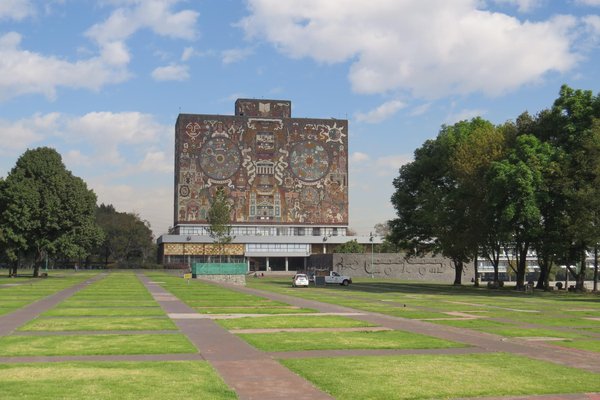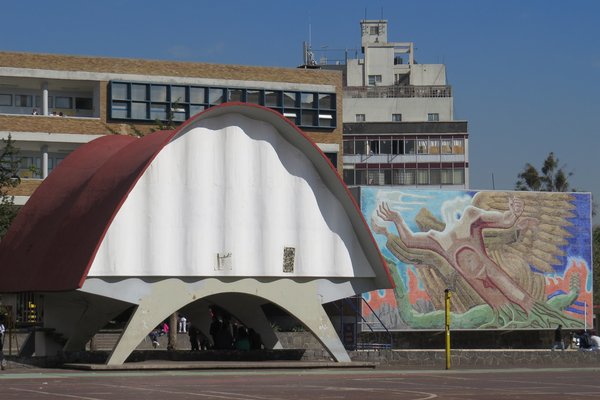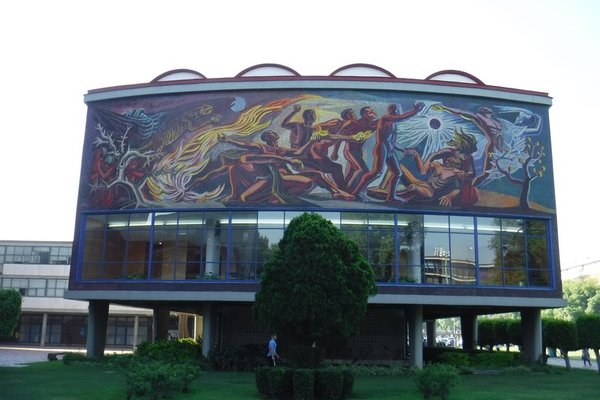Mexico
Central University City Campus of the UNAM
The Central University City Campus of the Universidad Nacional Autónoma de México (UNAM) is a prominent example of 20th century modernism.
It encompasses university buildings, sports facilities such as the Olympic Stadium, Cultural Center, and Central Library. They are surrounded by vast open spaces, esplanades, and gardens. Modernist elements such as reinforced concrete were combined with local volcanic stone that is also prominent in pre-Hispanic structures. Murals on the main campus were painted by Diego Rivera and David Alfaro Siqueiros.
Community Perspective: The UNAM is easily accessed by metro from Mexico City Center and it is still bustling with students. Expect no signboards so come prepared. The mural arts are the highlight.
Site Info
Official Information
- Full Name
- Central University City Campus of the Universidad Nacional Autonoma de Mexico (UNAM) (ID: 1250)
- Country
- Mexico
- Status
-
Inscribed 2007
Site history
History of Central University City Campus of the UNAM
- 2007: Inscribed
- Inscribed
- Type
- Cultural
- Criteria
- i
- ii
- iv
Links
- UNESCO
- whc.unesco.org
- Official
-
- fundacionunam.org.mx — Fundacion UNAM
All Links
UNESCO.org
- whc.unesco.org — whc.unesco.org/
Official Website
- fundacionunam.org.mx — Fundacion UNAM
Community Information
- Community Category
- Secular structure: Science and Education
Travel Information
Mexico City hotspot
Recent Connections
-
Free entrance
-
Universities
-
Mathematical Concepts
Pabellón de Rayos Cósmicos - Hyperbolic…
Connections of Central University City Campus of the UNAM
- Geography
-
-
Located in a Capital City
Mexico City (Capital of Mexico)
-
- Trivia
-
-
On Banknotes
UNAM; 2000 peso; 1987 -
Olympic Venues
venue for athletics and ceremony events in Mexico 1968 -
Hosted a FIFA World Cup match
UNAM contains the Mexico Olympic Stadium which hosted matches in the 1986 World Cup
-
- Architecture
-
-
Architectural design competitions
The master plan for the campus was the result of an architectural competition, in which architects Mario Pani and Enrique del Moral were awarded (Unesco website) -
Reinforced Concrete
"The campus (referred to as the CU: Ciudad Universitaria, or "University City") is an urban enclave within which buildings are compositionally placed upon a large pedestrian open space. In addition to a canonically Modern spatial and programmatic distribution, the high architectural quality of its reinforced concrete and masonry buildings earned the CU a classification in 2007 by UNESCO as a World Heritage site," -
Mosaic art
-
Hyperboloid Structure
Pabellón de Rayos Cósmicos (Félix Candela and Jorge Gonzales Reyna 1951)
-
- World Heritage Process
-
-
Perfect Inscriptions
2007
-
- Human Activity
-
-
Locations for playing sport
Olympic stadium
-
- Timeline
-
-
Built in the 20th century
Completed in 1954.
-
- WHS Hotspots
-
-
Mexico City hotspot
Located in Mexico City
-
- Science and Technology
-
-
Mathematical Concepts
Pabellón de Rayos Cósmicos - Hyperbolic Paraboloid. Hyperbolic paraboloid is a doubly ruled surface shaped like a saddle. "Cosmic Ray Pavilion is the product of the structural experiments of the architect Felix Candela is a very thin reinforced concrete double curvature based on the geometry of the hyperbolic paraboloid." -
Historic Laboratories
"Pabellón de Rayos Cósmicos" - its purpose was as a Cosmic Ray Laboratory -
Libraries
Central Library -
Universities
-
Botanical Gardens
Jardin Botanico Faustino Miranda. Belonging to the Institute of Biology. Situated south of the Olympic Stadium in the "Ecological Zone".See www.ib.unam.mx
-
- Visiting conditions
News
No news.
Recent Visitors
Visitors of Central University City Campus of the UNAM
- Adam Hancock
- Adrian Turtschi
- akacesfan
- Alberto Rodriguez Gutierrez
- Alejandro Lau
- Alexander Barabanov
- Alexander Lehmann
- Alex Baranda
- AmyAbroad
- Ana Lozano
- Argo
- Artur Anuszewski
- ashombob
- Aspasia
- Atila Ege
- Badwater
- basementonline
- Bill Maurmann
- Bluewonder310
- Boj
- brendairala
- brornt
- butterflybird
- Can SARICA
- Carlo Sarion
- Carlos Sotelo
- Caspar
- chenboada
- chenqtao
- Cheryl
- chiuliqi
- Christine
- Christoph
- Clyde
- ctravel
- Cyberczar
- CynthiaW
- czesioszpachelka
- Daniela Hohmann
- Daniel Chazad
- Delphine Delaunay
- Dennis Nicklaus
- Dimitar Krastev
- Don Irwin
- Dorejd
- DouglasR
- Drk9Stormy
- Elf21
- Elis
- Els Slots
- Eric Lurio
- Erik Jelinek
- Eva Kisgyorgy
- Fan Yibo
- Fede1203
- Feldhase
- Francky D'Hoop
- Frédéric M
- Frederik Dawson
- Garrett
- GeorgeIng61
- Grendel Gongan
- Hadrianus
- Harry Mitsidis
- headventure
- Hughes1920
- Iain Jackson
- Ian Cade
- Iara
- Ingemar Eriksson
- Ivan Rucek
- Jacob Choi
- Jana and Matt
- janis
- Janos
- Jarek Pokrzywnicki
- Javier
- Javier Coro
- Jawnbeary
- Jay T
- Jean Lecaillon
- Jeanne OGrady
- Jens
- João Aender
- Joel on the Road
- Jon Bauer
- Jon Opol
- Karito Vies
- Kasper
- Ken DJ
- Kevin McFarland
- kiank37
- Kim, Soo-youn
- Kjlauer
- KngAlaric
- Krzysztof B
- Kurt Lauer
- Kyle Magnuson
- Lara Adler
- lichia
- Little Lauren Travels
- ljowers
- Loic Pedras
- Lucas Del Puppo
- Lucio
- Ludvan
- Luis Filipe Gaspar
- Lukasz Palczewski
- Malgorzata Kopczynska
- Martina Rúčková
- Matthewsharris
- MaxHeAnouBen
- Mia esguerra
- Michael Ayers
- MichaelH
- Michael Novins
- michaelsballard
- Miguel Marquez
- Mihai Dascalu
- Mikko
- MMM
- Mstrebl1990
- nan
- Nihal Ege
- palka25
- Patrik
- Petteri
- Philipp Leu
- Philipp Peterer
- Potsdamer
- puessergio
- Randi Thomsen
- Reza
- Roger Ourset
- Roman Bruehwiler
- Santiago Lafuente
- saraleonela
- Sclowitz
- scubarrie
- Sergio Arjona
- Shandos Cleaver
- shoaibmnagi
- Shombob
- sibariam
- Simonf
- Slavi
- sncjob
- Solivagant
- Spike Zou
- Stan
- Stanislaw Warwas
- Svein Elias
- Szucs Tamas
- Tamara Ratz
- Taotao Chen
- Thomas Buechler
- Thomas van der Walt
- triath
- Tsunami
- ValiaVeweth
- Vanessa Buechler
- Van Hung
- Velvetlapis
- Vernon Prieto
- Walter
- Wojciech Fedoruk
- Xiquinho Silva
- Yang Chengyu
- Yi Han Goh
- Yongcheng Liu
- ZCTLife
- Zoë Sheng
- Zos M
- ZZSong
Community Reviews
Show full reviewsClyde
Central University City Campus of the UNAM
Central University City Campus of the UNAM (Inscribed)
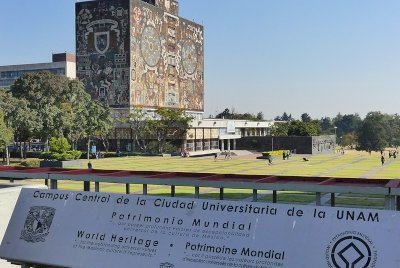
I visited this WHS in December 2021 on a sunny morning. The most iconic building of the Central University City Campus of the National Autonomous University of Mexico (UNAM) is the central library. Just next to it, on the terrace leading to the Rectory Tower building, is the UNESCO WHS inscription plaque, just opposite the tunnel leading to the stadium. Like other Mexican WHS, there are no information boards to help guide visitors, not even in Spanish, so you need to come prepared on what you want to see and some background information.
The OUV of this WHS lies in the dynamic fusion of Mesoamerican motifs and revolutionary ideals. The UNAM is an independent university founded in 1910 and built over the succeeding decades with contributions from many leading artists and architects. Apart from the main university buildings, there is a sculpture park with monumental earthworks built around lava flows. The university is one huge quadrangle, entered from above with long wide rows of steps leading down, almost mimicking the urban spaces of the Aztecs, with legible propaganda displayed on the university buildings.
The university's designs were influenced by functionalism, which at one time informed anthropology, psychology and the sciences. In a nutshell, it is the theory that all aspects of a society serve a specific function and are necessary for the survival of that society. This holistic regard for the past holds great meaning in a place with such archaeological evidence of pre-Colombian greatness.
Besides the …
Keep reading 0 commentsFrédéric M
Central University City Campus of the UNAM
Central University City Campus of the UNAM (Inscribed)
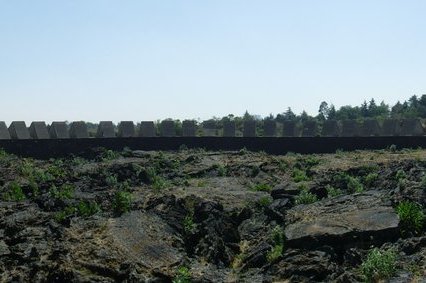
La Universidad Nacional Autónoma de México (UNAM) is a very (if not the most) important university in Latin America, and its campus is gigantic. I honestly had not realised how big it was before exiting the train at the Universidad metro station. Because it is tremendously HUGE! I was expecting some clear paths leading to the center of the campus from the metro station. I only stumbled on a confusing maze of street vendors and food stands before only hitting fences. After some walk, I found a map of the campus and though: Great! I'll be able to find my way around it. Mistake. It was only the map of the Facultad de Medicina Veterinaria y Zootecnia UNAM (Faculty of Veterinary Medicine UNAM), that alone has more than 20 buildings!
Nevertheless, I still made my way to main sights of the core zone. Despite the peaceful ambiance and the blooming Jacaranda, I was disappointed. As important as this university is, it did not appear special or unique to me. La Biblioteca Central, even though it might look like a giant owl or an oversized ghetto blaster, is an amazing piece of art and a valuable WHS. It is very beautiful and the murals made of thousands of colored tiles represent an extraordinary construction effort and a highly creative and innovative feat by Juan O'Gorman. Sadly, nothing else on the campus really stands out. Some buildings are worth mentioning: el Auditorio Alfonso Caso is notably beautiful. Unfortunately, the mural “El …
Keep reading 0 commentsIan Cade
Central University City Campus of the UNAM
Central University City Campus of the UNAM (Inscribed)
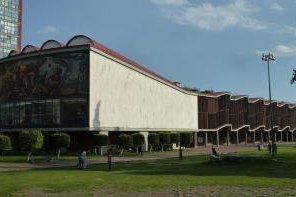
We nearly missed this one, wandering through from Copilco metro station we were met by a series of locked gates, seeming to show the whole campus could was out of bounds. Fortunately a local shop employee was able to direct us to a back entrance. This meant our first impression wasn't that great, though the tatty looking student union office covered in revolutionary left wing leaflets and graffiti certainly did bring a nostalgic and knowing smile to my lips.
Finally in the main precincts I was actually more impressed than I thought I would be. It felt familiar, however there was evidently something a little special about it. Obviously there are was the huge mosaics on the library. They are more intelligible as a history of Mexico up close, looking less like a giant owl than I had previously thought. However it was the quality of some of the other buildings that really grabbed me. My highlight was the post graduate centre and attached Auditorio Alfonso Caso elevated on slender piloti. The sheer amount of building sized mosaics dotted around the campus really started to make an impression.
My wife reflected that this was the WHS she felt most "dragged" to Mexico City, however she was happy to see the large Rivera mosaic on the Olympic stadium across the road, and I got another tick on yet another list. If you are heading there outside term time try the entrance next to this stadium on ave. Insurgents as it seems …
Keep reading 0 comments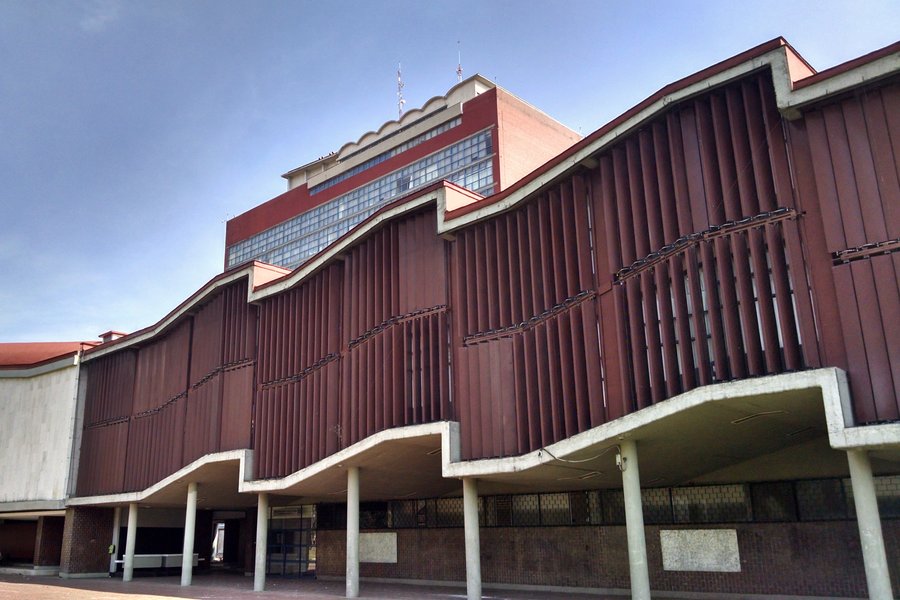
I fell in love with this campus the more time I spent within its boundaries. Firstly, there are several dominant murals, but there are also several "hidden" ones that I stumbled across while exploring. The Modernist buildings really compliment each other, and though often of eclectic designs, really are special taken as a whole. UNAM is an institution rich in History, with multiple Presidents of Mexico and Latin America being alumni, as well as writers, artists, and filmmakers such as Alfonso Cuarón. I could imagine walking the grounds and attending classes in these illustrious steel and glass buildings.
The spatial composition of the campus, along with the work done by dozens of engineers, artists, and architects make UNAM unique. I personally have found World Heritage properties associated with 20th-century modernism to be especially rewarding spaces to enter and to photograph.
'The Conquer of Energy' mural by José Chávez Morado
During my visit on a Sunday afternoon, there were several students playing Quidditch. (Yes, that Quidditch!) The sky was blue, the weather was pleasant, and I had all these structures and murals largely to myself. My spouse and I also benefitted from the hospitality so often found in Mexico. We somehow got mixed up with directions and a kind woman not only pointed us in the right direction, but gave us a lift, dropping us off at one of the the University entry points.
As an educator, the OUV here aligns with many values I share and hold dear. UNAM was …
Keep reading 0 commentsFrederik Dawson
Central University City Campus of the UNAM
Central University City Campus of the UNAM (Inscribed)
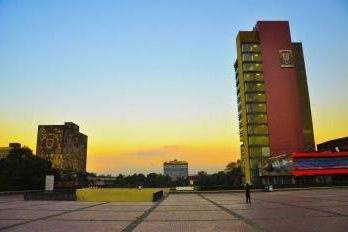
From Luis Barragan House, I continued my modernist journey to UNAM or Universidad Nacional Autonoma de Mexico, another UNESCO listed modern architecture site in Mexico City, by metro. I started from Copilco Station, but since I arrived almost 5 PM, there were no students for me to follow for direction; I had to walk to the direction where students came from instead. Luckily, I found the gate of the university and the car park area of Faculty of Medicine. The university was in full swing with late evening activities like group studying, meditation class, English club, drama play rehearsal, soccer, basketball etc. At first, I was quite awkward to walk around as I felt that it was not a place for tourists, but after watched those students for a while, it reminded me my university or even high school times, and that made the visit more personal than I thought.
The first interesting building I saw was the Cosmic Ray Pavilion, since there was a basketball competition on the foreground of this interesting looked building, the whole area was full with spectators and team supporters, so I only saw the pavilion from the other side of basketball field, but still I was able to admire the nearby giant mural of Franciso Eppens, the corn is probably the think that I like most from this mural. The next one was the mural at auditorium; personally, I did not like this one for its strange depictions, but it …
Keep reading 0 commentsEls Slots
Central University City Campus of the UNAM
Central University City Campus of the UNAM (Inscribed)
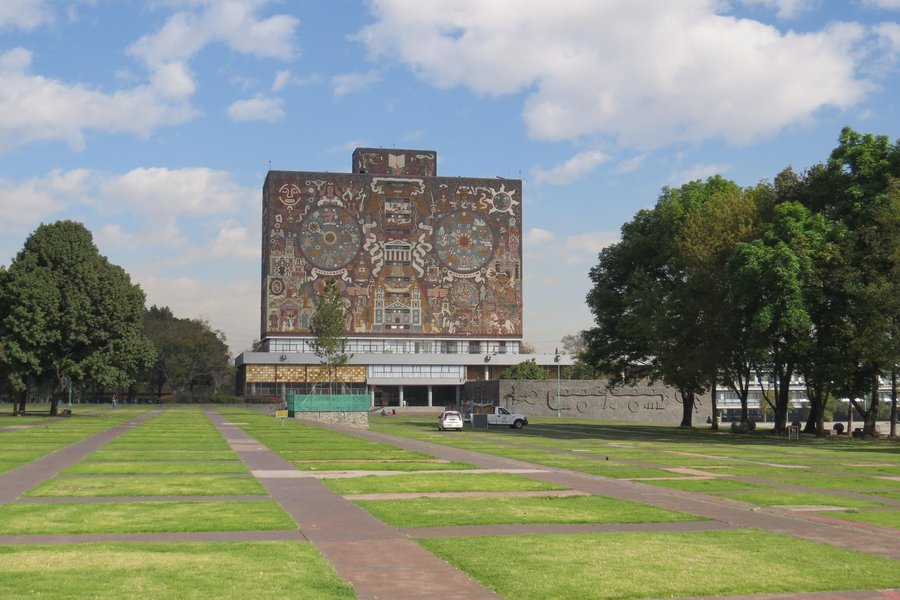
From the Copilco metro station, it is not immediately clear which way you have to go to the university campus. The station lies in a built-up area and I did not see any signs directing to the UNAM. But I did notice lots of medical students in white coats and decided to follow them. In about 5 minutes, we duly arrived at the Faculty of Medicine, the first complex of the university area. It's a bit strange to walk here as a tourist, as all the other people around you are staff and students. But you can just walk in and the general atmosphere is very relaxed.
The first great murals are already at this Faculty - rising enormously behind your back! And at the edge of a basketball field where students were playing, I noticed right away one of the more famous structures of the campus: the Cosmic Ray Pavilion by Felix Candela. There are no information panels or any other signs that will guide you around the university and I forgot to print out a map. That proved to be no problem though: from the Faculty of Medicine, you just head out straight ahead and you will pass all the highlights and end at the Olympic Stadium. I started walking on the right-hand side and took in the other side on my way back to the metro station.
The central area is occupied by a landscape garden designed by Luis Barragán. This part of the campus clearly has …
Keep reading 0 commentsSolivagant
Central University City Campus of the UNAM
Central University City Campus of the UNAM (Inscribed)
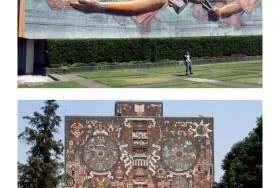
Although it was only inscribed in 2007 it is somewhat surprising to see that this easily accessible site in an easily accessible city still hasn’t been reviewed almost a year later. When I first visited Mexico City in 1971 it was inconceivable NOT to go out to see it, since the Library building in particular, with its O’Gorman mosaics, was a world famous iconic building occupying much the same space in “world consciousness” as the Sydney Opera House does today. However, much time has passed since those days only 3 years after Mexico hosted the 1968 Olympic Games and had received a degree of exposure since unrepeated (Indeed the Olympic stadium is part of this inscription). I had felt unable to do a review based on visits 36 and 25 years earlier but went back yet again during our trip round Central Mexico in Mar 2008 to assess how time had treated both the site and my perception of it.
“Modern” architecture (if a building designed at the start of the 1950s can be described as “modern”!) tends in my experience often not to survive time particularly well – either physically (e.g one cries to see the state of the buildings in Brasilia) or aesthetically. But we visited on a sunny Saturday morning, the concrete was light, the grass was green and the Jacaranda trees were in full flower – the architecture was being given a helping hand by nature! Students in cloaks and mortar boards were lining up, presumably …
Keep reading 0 comments
